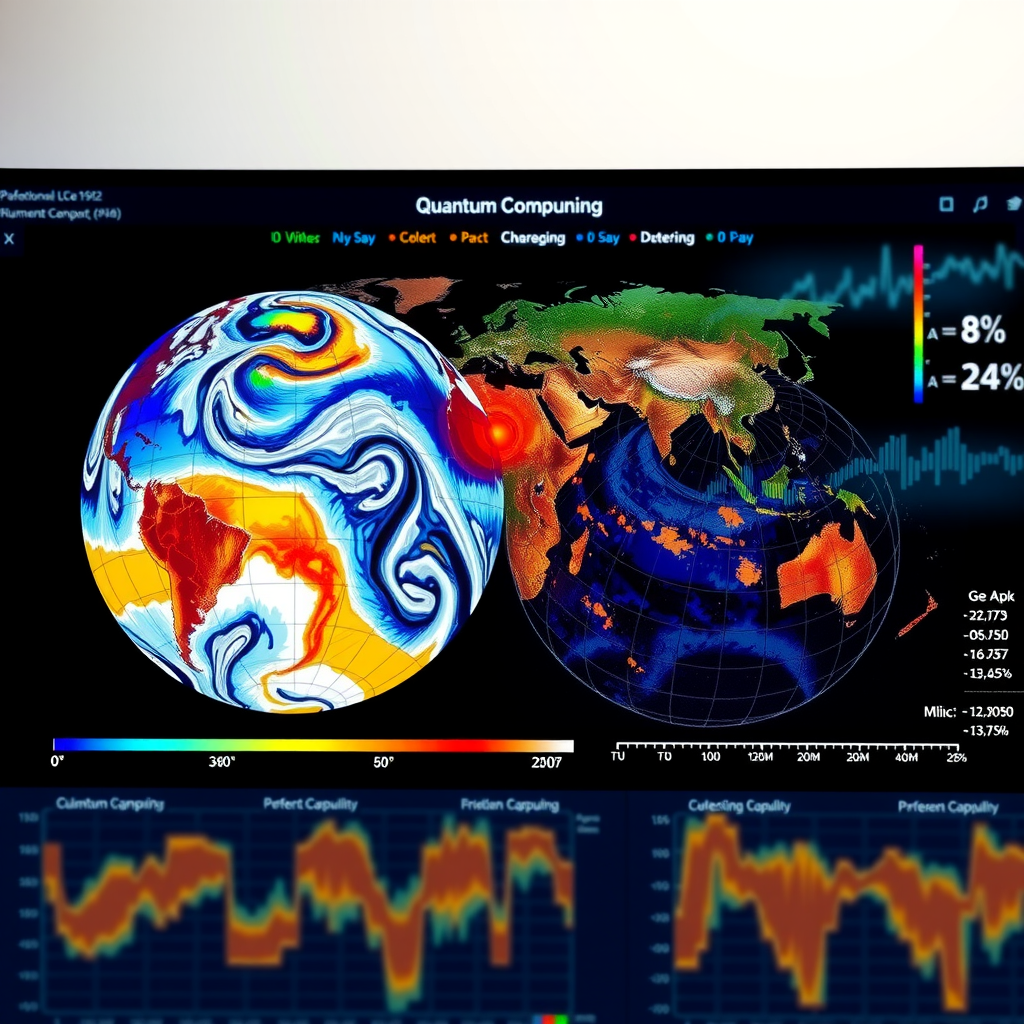
Quantum computing represents one of the most significant technological breakthroughs of the 21st century. What began as a theoretical concept rooted in the strange world of quantum mechanics has evolved into a tangible technology with the potential to revolutionize industries ranging from pharmaceuticals to technology. This comprehensive exploration examines how quantum computing has transitioned from abstract physics to practical applications that could reshape our technological landscape.
Understanding the Quantum Foundation
At its core, quantum computing leverages the peculiar properties of quantum mechanics—superposition, entanglement, and interference—to process information in fundamentally different ways than classical computers. While traditional computers use bits that exist as either 0 or 1, quantum computers use quantum bits, or qubits, which can exist in multiple states simultaneously through superposition.
This quantum advantage means that a quantum computer with just 300 qubits could theoretically represent more states than there are atoms in the observable universe. However, harnessing this power has proven to be one of the greatest engineering challenges of our time.
The Principle of Superposition
Superposition allows qubits to exist in a combination of both 0 and 1 states at the same time. This property enables quantum computers to explore multiple solution paths simultaneously, rather than sequentially as classical computers must do. When a measurement is made, the qubit collapses into one definite state, but until that moment, it maintains this dual existence.
Quantum Entanglement
Perhaps even more mysterious is quantum entanglement, where pairs or groups of qubits become correlated in ways that have no classical equivalent. When qubits are entangled, the state of one qubit instantaneously influences the state of another, regardless of the distance between them. This phenomenon, which Einstein famously called "spooky action at a distance," is crucial for quantum computing's power.

From Theory to Reality: The Historical Journey
The journey from theoretical quantum computing to practical devices spans several decades. In 1981, physicist Richard Feynman proposed that quantum systems could be simulated more efficiently using quantum computers. The following year, Paul Benioff described the first quantum mechanical model of a computer, laying the theoretical groundwork for what was to come.
The 1990s saw crucial theoretical breakthroughs. In 1994, Peter Shor developed an algorithm that could factor large numbers exponentially faster than classical computers—a discovery that sent shockwaves through the community. Two years later, Lov Grover created an algorithm for searching unsorted databases with quadratic speedup over classical methods.
Key Milestone:In 2019, Google announced achieving "quantum supremacy" when their 53-qubit Sycamore processor performed a specific calculation in 200 seconds that would take the world's most powerful supercomputer approximately 10,000 years to complete.
Current State of Quantum Computing Technology
Today's quantum computers remain in what many experts call the "Noisy Intermediate-Scale Quantum" (NISQ) era. These devices typically contain between 50 and a few hundred qubits and are highly susceptible to errors from environmental interference. Despite these limitations, significant progress continues across multiple technological approaches.
Major Technology Platforms
Several distinct approaches to building quantum computers are currently being pursued:
- Superconducting Qubits:Used by companies like IBM and Google, these systems operate at temperatures near absolute zero and use superconducting circuits to create qubits. They offer relatively fast gate operations but require extensive cooling infrastructure.
- Trapped Ions:Companies like IonQ and Honeywell use individual atoms trapped by electromagnetic fields as qubits. These systems typically offer longer coherence times and higher gate fidelities but operate more slowly than superconducting systems.
- Photonic Quantum Computing:This approach uses photons (light particles) as qubits and can potentially operate at room temperature. Companies like Xanadu and PsiQuantum are pioneering this technology.
- Topological Qubits:Microsoft is investing heavily in this theoretical approach, which promises more stable qubits through exotic quantum states, though practical implementation remains challenging.

Breakthrough Applications in Drug Discovery
One of the most promising near-term applications of quantum computing lies in pharmaceutical research and drug discovery. The process of developing new medications traditionally requires screening millions of molecular combinations—a task that can take years and cost billions of dollars.
Quantum computers excel at simulating molecular interactions because molecules themselves operate according to quantum mechanical principles. By accurately modeling how different compounds interact at the quantum level, researchers can:
- Predict protein folding patterns with unprecedented accuracy
- Simulate drug-receptor binding more efficiently
- Identify promising drug candidates faster
- Reduce the need for expensive laboratory testing in early research stages
In 2024, several pharmaceutical companies have partnered with quantum computing firms to explore applications in areas such as cancer treatment, neurological disorders, and antibiotic resistance. While we haven't yet seen quantum-designed drugs reach the market, the foundational work being done today could accelerate drug development timelines from over a decade to just a few years.
Climate Modeling and Environmental Applications
Climate change represents one of humanity's most pressing challenges, and quantum computing offers new tools for understanding and addressing it. Current climate models, while sophisticated, must make significant simplifications due to computational limitations. Quantum computers could enable more accurate climate predictions by:
- Processing vastly more variables simultaneously in weather and climate models
- Simulating complex atmospheric chemistry with greater precision
- Optimizing renewable energy grid management
- Designing more efficient materials for carbon capture and storage
Research teams are already using early quantum computers to model specific aspects of climate systems, such as ocean current patterns and atmospheric chemical reactions. As quantum hardware improves, these models will become increasingly comprehensive and accurate.
Real-World Impact:Quantum algorithms are being developed to optimize the placement and operation of wind turbines in large wind farms, potentially increasing energy output by 10-15% through better understanding of complex airflow patterns.

The Quantum Threat
Security experts estimate that within 10-15 years, sufficiently powerful quantum computers could break the RSA encryption that currently protects everything from online banking to government communications. This has led to a global race to develop "quantum-resistant" or "post-quantum".
Several countries, including China, have already deployed quantum communication satellites and ground-based quantum networks. The European Union and United States are investing billions in developing quantum-secure communication infrastructure.
Challenges on the Path Forward
Despite remarkable progress, significant obstacles remain before quantum computers can fulfill their transformative potential:
Error Rates and Quantum Decoherence
Qubits are extremely fragile and easily disturbed by environmental factors like temperature fluctuations, electromagnetic radiation, and even cosmic rays. This phenomenon, called decoherence, causes qubits to lose their quantum properties within microseconds or milliseconds. Current error rates are still too high for many practical applications, requiring extensive error correction that consumes additional qubits.
Scalability Issues
Building quantum computers with thousands or millions of qubits—the scale needed for many practical applications—presents enormous engineering challenges. Each additional qubit increases the complexity of the system exponentially, requiring more sophisticated control systems and error correction.
Algorithm Development
We've only scratched the surface of understanding which problems quantum computers can solve more efficiently than classical computers. Developing new quantum algorithms requires expertise in both quantum physics and computer science—a rare combination that limits the pace of progress.
Cost and Accessibility
Current quantum computers cost tens of millions of dollars and require specialized facilities and expertise to operate. Making quantum computing accessible to researchers and businesses beyond tech giants remains a significant challenge.

The Next Decade: What to Expect
Looking ahead to the next ten years, experts anticipate several key developments in quantum computing:
Near-Term (2025-2027)
- Quantum computers with 1,000+ qubits becoming available
- First practical quantum advantage demonstrations in optimization and machine learning
- Cloud-based quantum computing services becoming more accessible
Medium-Term (2028-2030)
- Quantum computers contributing to actual drug discoveries reaching clinical trials
- Hybrid classical-quantum systems becoming standard in certain industries
- Significant improvements in error correction enabling longer, more complex calculations
- Emergence of quantum computing as a service (QCaaS) industry
Long-Term (2031-2034)
- Fault-tolerant quantum computers with millions of qubits
- Quantum computers solving previously intractable problems in materials science and chemistry
- Integration of quantum computing into mainstream IT infrastructure
- New industries and applications we haven't yet imagined
Preparing for the Quantum Future
As quantum computing matures, organizations and individuals should begin preparing for its impact. This includes:
- Education and Training:Developing quantum literacy among IT professionals and researchers
- Security Upgrades:Transitioning to quantum-resistant encryption before quantum computers pose a threat
- Strategic Planning:Identifying areas where quantum computing could provide competitive advantages
- Collaboration:Partnering with quantum computing companies and research institutions
Industry Insight:Major technology companies are already investing heavily in quantum computing research, with IBM, Google, Microsoft, Amazon, and others collectively spending billions annually on quantum technology development and making quantum computers available through cloud platforms.
Conclusion: A Quantum Leap Forward
The evolution of quantum computing from theoretical concept to practical technology represents one of the most remarkable achievements in modern science and engineering. While significant challenges remain, the progress made over the past decade has been extraordinary, and the pace of advancement continues to accelerate.
Quantum computing won't replace classical computers for everyday tasks, but it will revolutionize how we approach certain classes of problems that are currently beyond our computational reach. From discovering life-saving medications to understanding climate change, from securing our communications to optimizing complex systems, quantum computing promises to expand the boundaries of what's possible.
As we stand at this technological frontier, the next decade will be crucial in determining how quickly quantum computing transitions from laboratory curiosity to transformative tool. The journey from theory to practical application is well underway, and the quantum revolution is just beginning.
